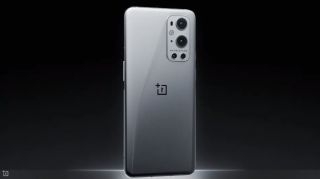The OnePlus 9 and OnePlus 9 Pro have both been unveiled at the company’s big March 23 launch. We’re gently learning about the two new handsets, and we’ll be providing you with details on the phones as we hear them.
Developing…
OnePlus 9 Pro
The OnePlus 9 Pro’s main focus is its camera. Developed in collaboration with Hasselblad, the device will come with a 48 MP main camera and a 50MP ultrawide camera, with a larger sensor than even the iPhone 12 Pro Max‘s main sensor, according to OnePlus.
With this partnership comes Natural Color Calibration, a feature intended to provide better color accuracy and better overall photo quality, if OnePlus’s claims are to confirmed.
The device will also be using a custom Sony IMX 789 sensor, which OnePlus says will deliver balanced lighting alongside impressive detail without the need for editing.
There’s an orange shutter button on the camera this time, too, as well as a new watermark with the Hasselblad branding.

The OnePlus 9 Pro will feature a 3.3x telephoto zoom lens, and a 16MP front-facing camera which the company says is capable of more natural face shots than you would expect from a sensor of this type.
It’ll also come with a dedicated Hasselblad Pro mode, allowing users to customise exposure, white balance and much more.
OnePlus has confirmed the 9 Pro can record in up to 8K at 30 frames per second. It can also shoot at 4K in 120fps so you’ll be able to record better slow-mo than most other smartphones.
In terms of design, the device will sport a glass rear, a slightly curved screen, an aluminium frame and a punch-hole camera in the top left of the phone’s screen, all of which we were expecting. Color-wise, OnePlus has confirmed the phone will ship in either Morning Mist, Pine Green and Stellar Black.

The OnePlus 9 Pro display sports a technology that the company is calling Fluid Display 2.0, which is essentially an adaptive refresh rate we’ve seen elsewhere. This means the phone can go from 120Hz to 1Hz, depending on what software you’re using. It’ll also boast QHD+ resolution.
Under the hood, the device will use the Qualcomm Snapdragon 888 chipset, of the kind used in the Samsung Galaxy S21 Ultra. That means it’s very fast, basically.
